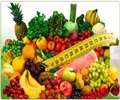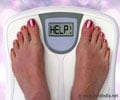Reading the labels on the food products may help to curb obesity, especially among women, finds a study.

Along with the Universities of Tennessee, Arkansas (USA) and the Norwegian Institute for Agricultural Finance Research, the University of Santiago de Compostela has participated in a study on the relationship between reading the food label and obesity.
The results indicated that the body mass index of those consumers who read that label is 1.49 points lower than those who never consider such information when doing their food shopping. This translates as a reduction of 3.91 kg for an American woman measuring 1.62 cm and weighing 74 kg.
The data was taken from the annual National Health Interview Survey (NHIS) performed by the U.S. Centers for Disease Control and Prevention (CDC - http://www.cdc.gov/nchs/nhis.htm). Some 25,640 observations were collected on health and eating and shopping habits. These included various questions on whether participants read the nutritional information in supermarkets and how often.
"First we analyzed which was the profile of those who read the nutritional label when purchasing foods, and then we moved on to the relationship with their weight," as explained to SINC by María Loureiro, lead author of the study published in the 'Agricultural Economics' journal.
"Obesity is one of the most serious health problems in modern day USA," outlines the researcher. "The number of overweight or obese adults has risen over the years. From 2009 to 2010, more than a third (nearly 37%) of the adult population in this country were obese and in children and adolescents this figure rises to 17%.
Greater effect on urban white women
Furthermore, the city-dwelling population (49% of the sample) takes nutritional information into account the most. This is also the case for those with high school education (40% of those surveyed) and universities studies (17% of the total sample).
According to sex, 58% of men either habitually or always read the information contained within nutritional labels. However, this figure stands at 74% for women.
"In general, the associated impact is higher amongst women than men," adds the researcher. On average, women who read the nutritional information have a body mass index of 1.48 points lower, whereas this difference is just 0.12 points in men.
The study also touches on significant ethnic differences. In this sense, the white female consumers see the greatest reduction in the body mass of around 1.76 points.
"We know that this information can be used as a mechanism to prevent obesity. We have seen that those who read food labels are those who live in urban areas, those with high school and high education. As we would hope therefore, campaigns and public policy can be designed to promote the use of nutritional labeling on menus at restaurants and other public establishments for the benefit of those who usually eat out," concludes Loureiro.
Source-Eurekalert
 MEDINDIA
MEDINDIA




 Email
Email










